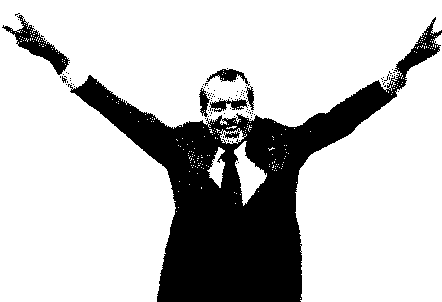
Mr. Dostert's Domain


The Executive Branch.
The Presidency
The Executive Branch is the most visible part of our government, comprised of the President, the Vice President, and the Bureaucracy. The President's job is extremely complex as he must balance foreign and domestic concerns as well as fulfill the symbolic and ceremonial duties the presidency entails. The primary job of the President is the enforcement of the law. Because the branch is so closely linked to one person, American Presidents have the ability to shape the government in their own image and thereby shape American policy to reflect their personal beliefs and philosophy.

The Roles of the President
The President fills many roles within our government.

-
Chief of State
-
Chief Executive
-
Chief Administrator
-
Commander in Chief
-
Chief Diplomat
-
Chief Legislator
-
Chief Citizen
-
Chief of Party







The Election Process
The President of the United States is elected through a process that is known as the Electoral College. On election night there is not one single election for the president, there is actually 51; one for each state and the District of Columbia. The winner of each election gains that states electoral votes, equal to the number of congressmen who represent that state (House+Senate=Electoral Votes). To win the election, the candidate must win a majority of electoral votes (270). If no candidate receives a clear majority of electors the election is deferred to the House of Representatives who will vote by states.

In recent years the Electoral College has come under increased scrutiny. Because it is possible for a candidate to lose the popular vote yet still win the presidency several alternatives have surfaced. Some have argued for the complete removal of the Electoral College and the institution of a direct popular election. Others have argued for a district plan which would see Americans vote by congressional districts with two bonus votes for winning the popular vote in a state. Another idea is called the proportional plan which would give candidates the perportion of electoral votes they win in each state. The final idea is known as the national bonus plan whic suggests adding electoral votes to the candidate who wins the national popular vote. Although each proposal has its strengths and weaknesses, changing the electoral college is unlikely in that it has become entrenched into American politics and is a very quick and for the most part efficient way of electing a president.
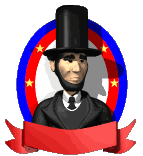
The Office of the President
The office of President is a very unique one which gives a great deal of flexibility to the person elected to the office. Each president is able to choose how he deals with issues and how he will try to address the challenges of the nation.
Presidential Tenure
The term of a president is set at four years by the Constitution. Following the presidency of Franklin Roosevelt many advocated for the establishment of a two term limit. The Twenty-Second Amendment officially set a two term limit, with a maximum tenure of ten years (2 years assumed presidency + 2 four year terms).

Presidential Succession
The Twenty-Fifth Amendment of the Constitution officially set the rules of succession for the presidency should the president die or become incompasitated. It goes as follows:

The Vice-President

If ever the office is vacant the Vice President will immediately be sworn in as President of the United States.



The Vice President has two responsibilities as described by the Constitution. First, the Vice President presides over the Senate as an executive check on the Legislative Branch. He has no vote unless there is a tie in which he would have the tie-breaking vote. His second responsibility involves Presidential disability. In the event that the President become incompasitated the Vice President is able to determine if and when he assumes the responsibility of the Presidency.
Initially the Vice President was decided as the runner-up in the Presidential election however the Twelfth Amendment changed the process so that each candidate for President would choose their own running-mate to fill the office of Vice President if they are elected. This change has made the selection of a running-mate very important to Presidential elections as Vice Presidential candidates are selected to try to gain more votes by balancing the ticket, or creating more widespread appeal for the candidate.

The Growth of Presidential Power
As the nation has become more industrialized and and technologically advanced, the people have demanded that the Federl Government play a larger role in transportation labor, civil rights, health, welfare, communication, education, the environment, and a host of other fields. There has been a frequent need for extraordinary and decisive action in times of national emergency, most notably in times of war. Because the President has the unique ability to be seen and take unilateral actions the power of the President has continually grown from the creation of the Constitution until today.

This use of Presidential power is best exemplified through the two dominant views of Presidential power: Theodore Roosevelt and William Taft.
Theodore Roosevelt
Theodore Roosevelt's "stewardship" theory was based off the idea that the president could do anything that the Constitution did not forbid. He believed the president to be a "steward" of the people and "to do all he could for the people." By exercising this type of power Roosevelt believed he was able to do what was necessary for the country and what it demanded. To watch out for the "common well-being" of the nation, Roosevelt believed this type of informal power had to be utilized.

William Howard Taft
William Taft's "literalist" theory was based upon the idea that the president could not do anything that the Constitution did not permit. He believed that a president's "jurisdiction must be justified and vindicated by affirmative constitutional" provisions, or else those powers do not exist. Taft argues that by giving the executive informal powers is not only limitless, but also unsafe, creating the potential to invade upon private right.

Recently this expansion of Presidential Powers has come under increased scrutiny as Presidents increasingly take action without the permission of Congress. Critics of these aggressive presidents have labeled them as creating an Imperial Presidency, charging the Executives of exceeding their Constitutional limits. This leaves Americans with the continuing question, do we want a strong and capable president who is able to act when necessary, or a president strictly limited by the Constitution?



The Presidents
1789-1825
1825-1849
1850-1865
1865-1885
1885-1913
The Powers of the President
The President of the United States is given numerous powers by the Executive Article of the Constitution. These powers cover a broad range of duties and responsibilites placed on the President which have increased over time.

Executive Powers
As Chief Executive of the United States the President is charged with upholding the laws of the country. To do this he is granted extraordinary power. He is able to choose the leaders of government agencies and chooses Cabinet Members to oversee Executive Departments with congressional approval to ouphold the law. Furthermore the President can issue an Executive Order, which has the force of law without being approved by congress. These orders can be very controversial because they are seen as the President going around the limitations of the Constitution and dictating his own beliefs rather than following the rule of law.
Legislative Powers
As Chief Legislator the President has an important role in the creation of law in the United States. The Presidential powers in the law-making process include: Setting the Agenda, Approving/Vetoing Laws, Suggesting Legislation, Calling Special Sesions for Congress, and the Power to Prorogue a session of Congress. Together with Congress the President works to complete the primary goal of government; to translate public will into public policy.



Military Powers
The President holds control of the military might of the United States. As Commander-in Chief it is his responsibility to protect the people of the United States as well as secure the interests of the United States globally. In a state of emergency the President can authorize the mobilization any of the armed services as well as the state units of the national guard. This immense power has been used by virtually every President since World War II and has prompted Congress to pass the War Powers Act of 1973. The War Powers Resolution requires the President to notify Congress within 48 hours of committing armed forces to military action and forbids armed forces from remaining for more than 60 days, with a further 30 day withdrawal period, without an authorization of the use of military force or a declaration of war.


Diplomatic Powers
The President is America's representative to the world. This position is often exceedingly difficult because he must balance his personal beliefs, the interests of the nation, and the desire to avoid conflict in all that he does. The President has many powers in this realm. The most obvious is the ability to make a treaty with another country. This power is difficult in many situations because all treaties must be approved by the Senate. To circumvent this difficulty the President often instead makes Executive Agreements with other nations. These agreements are made by two head-of-states and carry much of the same effects as a treaty. Another power the President holds in international affairs is the power of recognition. The President has the authority to determine which nations the United States deals with at any time. If he chooses to withhold recognition the government removes its representatives from that country and cuts off all political, social, and economic ties to that nation. This is a powerful weapon of the President because most countries can not afford to lose the aid and markets the U.S. provides annually.


Judicial Powers
The President is also very important to the establishment of Justice in the United States. His first power is in the selection of Supreme Court Justices. These Justices are appointed for life so his decisions are vital for the future of our nation. He also has the authority to check decisions made by the courts. In any federal conviction of a crime the President may issue reprieves to delay a punishment, commute or reduce a sentence, grant a group amnesty for a crime, or give legal forgiveness for a crime called a pardon.


The White House
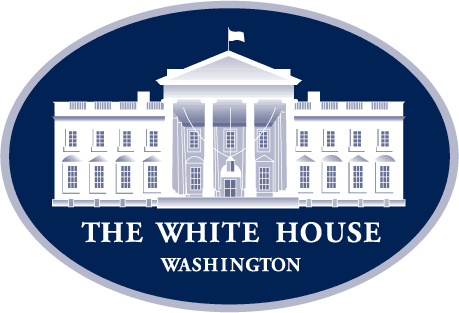
Our first president, George Washington, selected the site for the White House in 1791. The cornerstone was laid in 1792 and a competition design submitted by Irish-born architect James Hoban was chosen. After eight years of construction, President John Adams and his wife, Abigail, moved into the unfinished house in 1800. During the War of 1812, the British set fire to the President’s House in 1814. James Hoban was appointed to rebuild the house, andPresident James Monroe moved into the building in 1817. During Monroe’s administration, the South Portico was constructed in 1824, and Andrew Jackson oversaw the addition of the North Portico in 1829.
In 1902, President Theodore Roosevelt began a major renovation of the White House, including the relocation of the president’s offices from the Second Floor of the Residence to the newly constructed temporary Executive Office Building (now known as the West Wing). The Roosevelt renovation was planned and carried out by the famous New York architectural firm McKim, Mead and White. Roosevelt’s successor, President William Howard Taft, had the Oval Office constructed within an enlarged office wing.



The Bureaucracy
As Chief Administrator the President is in charge of running our government effectively and efficiently. Because the government requires professionals to do this, our nation has established a huge network of unelected officials responsible for the day-to-day operations of our government. Together they collectively form what is known as the bureaucracy. These people do everything from deliver the mail to maintaining the national parks of the United States. This system is necessary to maintain the running of our government outside of the conflicts of politics to ensure that the government continues to opperate no matter who is elected to run it. Bureaucracies are organized like corporations in the form of a heirarchy. This elaborate system maintains accountability for all members who ultimately answer to the President of the United States.

The bureaucracy has been criticized for its extreme inefficiencies over the years. As the country grew the size of the bureaucracy followed. Today the United States government is the largest employer in the country which alarms many conservatives who demand a reduction in the red tape which slows down the opperation of government policies due to rigid policies and a system that rewards waste .
Criticisms
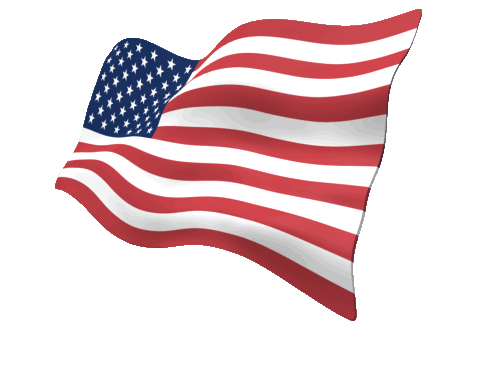
The Executive Departments
Because the President's job is so massive he must delegate authority to others to run the departments of the government. He therefore appoints qualified candidates who reflect his views to administer an executive department and report back to him. Collectively we refer to these officers as the President's Cabinet. The President meets regularly with these officials at Cabinet meetings to keep him updated on the state of the nation as well as to give direction to each department.

The framers of the Constitution never mentioned the Cabinet when they laid out the Executive Branch. It was the creation of America's first President George Washington who appointed aids to effectively run the areas of government which he saw as most urgent. These original departments included the Department of State, the Department of War, and the Department of the Treasury. Today the President's Cabinet consists of 15 Executive Departments as well as the Vice President who has had an increasing role in Presidential Policy.

Development of the Cabinet
Washington's first Cabinet

Executive Departments


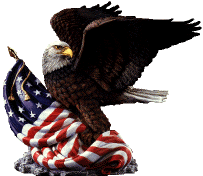
Foreign Policy
The President has virtually complete control when shaping America's Foreign Policy. Foreign Policy combines three of the President's roles- Chief of State, Chief Diplomat, and Commander in Chief to accomplish three goals:
-
Ensure National Security
-
Foster the Growth of the Economy
-
Make the World a Better Place

